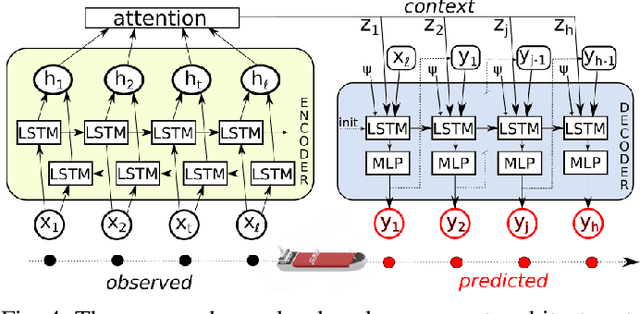Deep Learning Methods for Vessel Trajectory Prediction based on Recurrent Neural Networks
Paper and Code
Jan 07, 2021



Data-driven methods open up unprecedented possibilities for maritime surveillance using Automatic Identification System (AIS) data. In this work, we explore deep learning strategies using historical AIS observations to address the problem of predicting future vessel trajectories with a prediction horizon of several hours. We propose novel sequence-to-sequence vessel trajectory prediction models based on encoder-decoder recurrent neural networks (RNNs) that are trained on historical trajectory data to predict future trajectory samples given previous observations. The proposed architecture combines Long Short-Term Memory (LSTM) RNNs for sequence modeling to encode the observed data and generate future predictions with different intermediate aggregation layers to capture space-time dependencies in sequential data. Experimental results on vessel trajectories from an AIS dataset made freely available by the Danish Maritime Authority show the effectiveness of deep-learning methods for trajectory prediction based on sequence-to-sequence neural networks, which achieve better performance than baseline approaches based on linear regression or feed-forward networks. The comparative evaluation of results shows: i) the superiority of attention pooling over static pooling for the specific application, and ii) the remarkable performance improvement that can be obtained with labeled trajectories, i.e. when predictions are conditioned on a low-level context representation encoded from the sequence of past observations, as well as on additional inputs (e.g., the port of departure or arrival) about the vessel's high-level intention which may be available from AIS.
 Add to Chrome
Add to Chrome Add to Firefox
Add to Firefox Add to Edge
Add to Edge